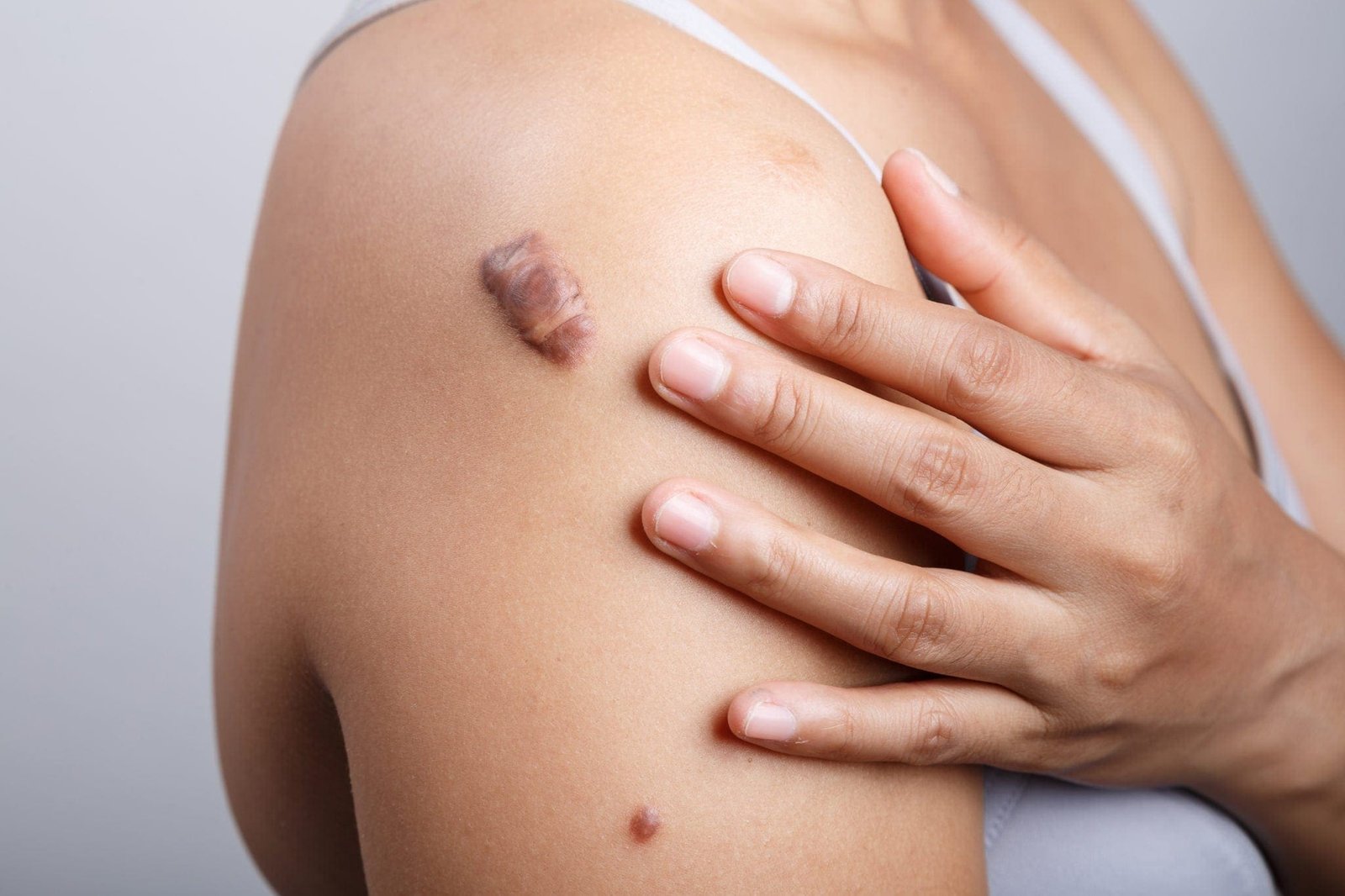Athena Skin Hair & Dental Clinic
Keloid Treatment

What is Keloid Treatment
Symptoms of Keloids
Keloids can be identified by the following symptoms:
Raised, thickened skin over a previous wound or incision
Shiny, smooth, or rubbery texture
Pink, red, purple, or darker than surrounding skin
Itchiness, tenderness, or pain
Gradual enlargement over time
Causes of Keloids
Keloids form when the body’s healing process overreacts, producing excessive collagen at the site of an injury. Common causes include:
Surgical incisions
Acne scars
Piercings (especially ear and nose piercings)
Burns
Cuts and abrasions
Tattoos
Vaccination sites
Keloid Treatment Procedures
1. Corticosteroid Injections
Steroid injections, such as triamcinolone, help reduce inflammation and flatten the keloid.
Usually administered every 4-6 weeks for several months.
May cause skin thinning as a side effect.
2. Laser Therapy
Laser treatment, particularly pulsed-dye lasers (PDL), can reduce redness and flatten keloids.
Multiple sessions may be required.
Works best when combined with other treatments like steroid injections.
3. Surgical Removal (Excision)
The keloid is surgically cut out.
May result in recurrence if not combined with other treatments like radiation or steroids.
4. Cryotherapy
Freezing the keloid using liquid nitrogen.
Helps shrink smaller keloids and reduce symptoms.
May cause temporary skin discoloration.
5. Silicone Sheets and Gels
Applying silicone-based sheets or gels over the keloid can flatten and soften the scar over time.
Best results are seen when used consistently for months.
6. Radiation Therapy
Low-dose radiation is applied after surgical removal to prevent regrowth.
Typically used for severe keloids that recur.
7. Pressure Therapy
Pressure garments or earrings (for earlobe keloids) can help prevent and reduce keloid formation.
Works best when applied soon after wound healing.
8. Topical Treatments
Creams containing onion extract, imiquimod, or retinoids may help lighten and soften keloids.
Often used as supplementary treatments.
Prevention of Keloids
Preventing keloids is crucial, especially for individuals prone to them. Here are some tips:
Avoid unnecessary skin trauma, such as piercings, tattoos, and surgeries.
Use silicone sheets or gels after skin injuries to minimize scar formation.
Apply sunscreen to scars to prevent darkening and thickening.
Massage scars with moisturizing oils like vitamin E to improve healing.
Early treatment of acne or skin infections to prevent deep scarring.
Consult a dermatologist for any previous history of keloid formation before undergoing cosmetic procedures.
Recovery After Keloid Treatment
Recovery time depends on the treatment method used:
Steroid Injections: Minimal downtime, but multiple sessions are needed.
Laser Therapy: Mild redness and swelling for a few days.
Surgical Removal: Stitches may be required; healing takes a few weeks.
Cryotherapy: Skin may blister and peel before improvement.
Radiation Therapy: Minor skin irritation that resolves within days.
Silicone Therapy: Requires continuous use for several months.
Managing Discomfort During Recovery:
Keep the treated area clean and moisturized.
Avoid excessive sun exposure and apply SPF.
Follow the doctor’s post-treatment care instructions.
Wear pressure garments as recommended.
Be patient, as full results may take several months to appear.
